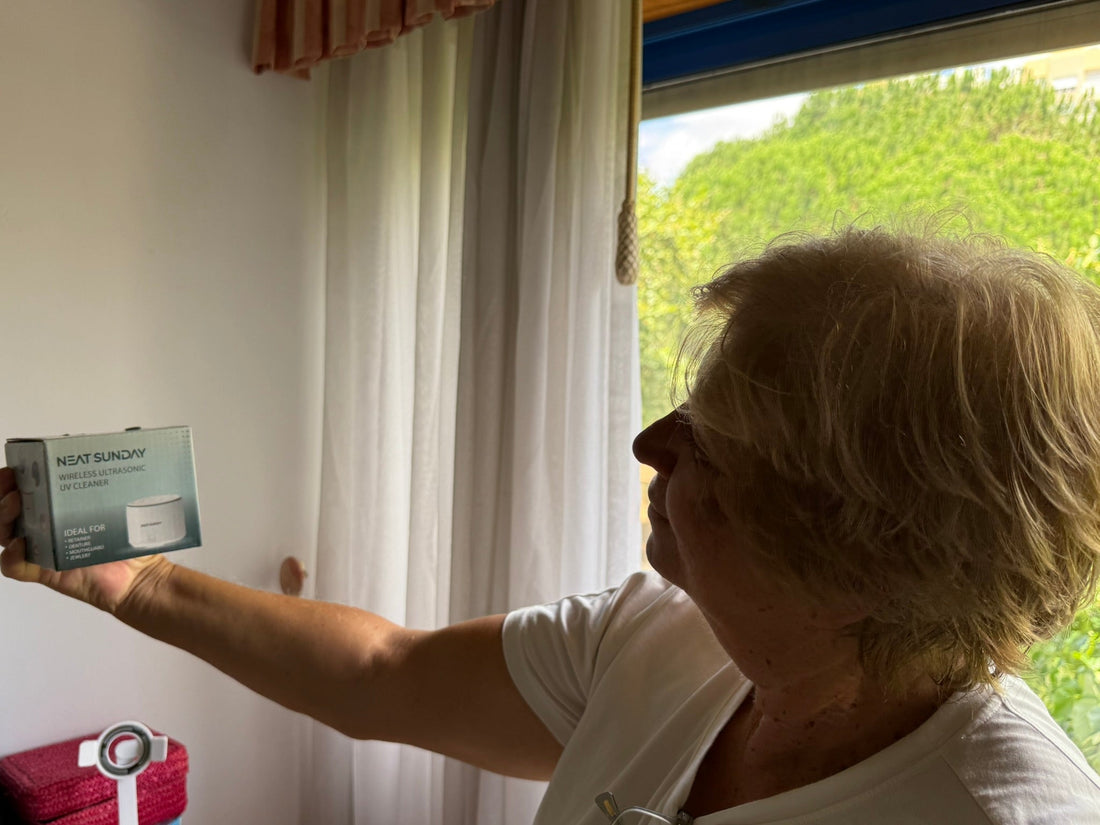This one’s personal. My aunt called me recently after a dental check-up. Her dentist had told her—very kindly—that she needed to clean her dentures better. She was embarrassed, but I understood immediately. Dentures are tricky. They don’t just need to look clean; they need to be truly clean to protect oral health. That conversation was one of the reasons I wanted to create a tool that could make denture care easier, safer, and more effective.
Why denture hygiene is critical
Dentures, like natural teeth, collect plaque and bacteria. But because they’re made of acrylic and metal, they can harbor biofilm even when they look shiny on the surface. Poor cleaning can lead to bad breath, gum irritation, and—in some cases—fungal infections like denture stomatitis. Research shows that oral hygiene is closely linked to overall health, especially in older adults, making denture care more than just cosmetic.
Why dentures are hard to clean
Traditional methods often fall short. Brushing dentures with toothpaste can cause microscopic scratches, which become perfect homes for bacteria. Soaking them in tablets or solutions helps, but doesn’t always remove biofilm from every corner, especially around clasps or tight curves. And hot water is a big no-go—it can warp the material.
That’s why dentists are increasingly recommending ultrasonic cleaning: a technology that can clean deeply without damaging the appliance.
How ultrasonic cleaning works
Ultrasonic cleaners use sound waves to create tiny bubbles that collapse with enough force to shake off debris and biofilm. It’s safe for the materials dentures are made from, yet powerful enough to reach into areas a brush simply can’t. For users, it means less effort, less worry, and better oral safety over the long term.
Comparing cleaning options for dentures
| Method | Effectiveness | Safety | Ease of Use | My Aunt’s Experience |
|---|---|---|---|---|
| Toothbrush & Toothpaste | Moderate, but scratches surface | Risk of damage | Simple | Left her dentures looking dull and cloudy over time. |
| Soaking Tablets | Good for odor and surface debris | Safe | Easy, but slow | Helped with smell but didn’t feel “fresh.” |
| Hot Water | Poor, risk of warping | Unsafe | Quick | Not recommended by her dentist. |
| Ultrasonic Cleaning | Excellent, removes hidden biofilm | Very safe | Fast and consistent | Gave her dentures a truly clean, smooth feel. |
My perspective on older family and oral care
As someone who cares deeply about older people in my family, I see denture cleaning as more than hygiene—it’s dignity, comfort, and confidence. My aunt doesn’t want to fuss with complicated routines or worry about whether her smile is “clean enough.” She just wants to enjoy food, laugh with her friends, and not have to think twice about it. That’s where tools like ultrasonic cleaners make a real difference.
Final thoughts
Dentures deserve the same care as natural teeth, maybe even more. Using the right cleaning method isn’t just about a brighter smile; it’s about preventing infections, protecting gum health, and feeling confident every day. For my aunt—and for me—an ultrasonic cleaner isn’t just a gadget. It’s peace of mind.
Common questions
Can I use toothpaste to brush dentures?
It’s not recommended. Toothpaste can scratch the surface, making dentures harder to clean over time.
Are soaking tablets enough on their own?
They help with odor but may not remove all biofilm. Pairing them with ultrasonic cleaning works best.
Is ultrasonic cleaning safe for dentures with metal parts?
Yes, ultrasonic cleaning is safe for most denture types, including those with clasps.
How often should dentures be cleaned?
Daily cleaning is best, ideally after meals, with at least one deep clean using an ultrasonic device.

